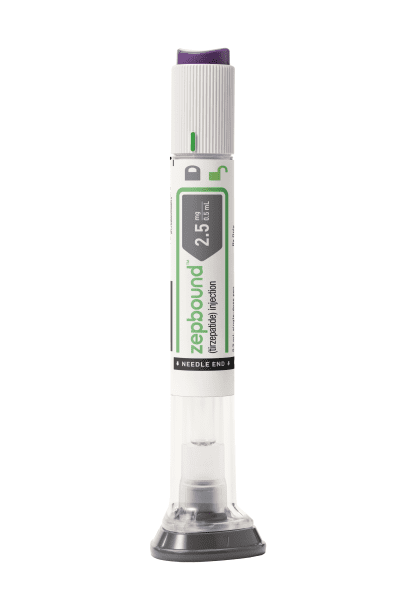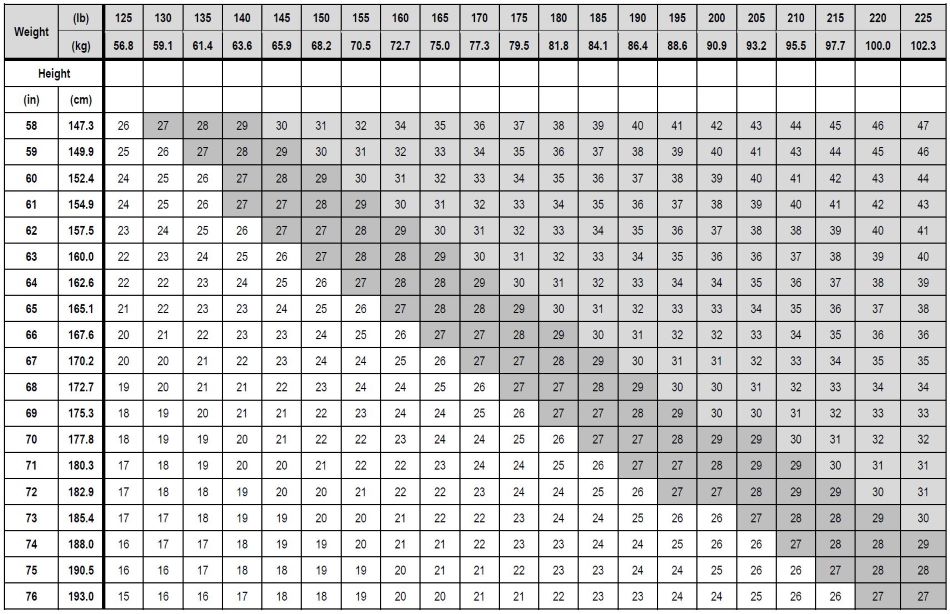There are three doses of Zepbound. The doses vary based on the patient’s condition and doctor’s recommendation.
Zepbound is a medication prescribed for specific conditions. Understanding its dosage is crucial for effective treatment. The drug comes in three different doses, tailored to individual patient needs. Proper adherence to the prescribed dose ensures optimal results and minimizes side effects.
Consulting a healthcare professional before starting Zepbound is essential. They can provide guidance on the appropriate dose for your condition. It’s important to follow the doctor’s instructions carefully. Misusing or altering the dose without professional advice can lead to complications. Always prioritize your health by sticking to the prescribed regimen. This approach ensures the best therapeutic outcomes for Zepbound users.
Zepbound Basics
Understanding the basics of Zepbound is essential for its effective use. This section delves into what Zepbound is and its role in medicine.
What Is Zepbound?
Zepbound is a medication used to treat various conditions. It works by regulating specific body functions. Doctors prescribe it for specific health issues.
The Role Of Zepbound In Medicine
Zepbound plays a crucial role in modern medicine. It helps manage chronic diseases and improves patient quality of life.
| Dose | Usage |
|---|---|
| 25mg | For mild conditions |
| 50mg | For moderate conditions |
| 100mg | For severe conditions |
Doctors adjust the dose of Zepbound based on the patient’s needs. Follow the prescribed dose carefully to avoid side effects.
Key Points to Remember:
- Zepbound treats specific health issues.
- It has different doses for different conditions.
- Always follow the doctor’s prescription.
Consult your doctor before starting Zepbound. They will guide you on the correct usage and dose.

Credit: www.drugs.com
Dosage Formulations
Zepbound is a versatile medication. It comes in various formulations. These help cater to different patient needs. Knowing the right dose is crucial for its effectiveness.
Types Of Zepbound Doses
Zepbound is available in multiple forms. Each has its own benefits. Here are the main types:
- Tablets: Easy to take with water.
- Capsules: Often preferred for ease of swallowing.
- Liquid: Ideal for children or those who have trouble swallowing pills.
- Injection: Administered by healthcare professionals for rapid effect.
Standard Dosage Recommendations
The dosage varies based on the condition treated. Doctors decide the right amount. Here are the general guidelines:
| Form | Dosage | Frequency |
|---|---|---|
| Tablets | 50 mg | Once a day |
| Capsules | 100 mg | Twice a day |
| Liquid | 5 ml | Three times a day |
| Injection | 1 ml | As needed |
Note: Always follow your doctor’s advice. Do not self-medicate.
Dosing Schedule Insights
Understanding the dosing schedule for Zepbound is essential for effective treatment. This section covers the initial dosing guidelines and the maintenance dosing protocols. Ensuring you follow these guidelines can lead to better health outcomes.
Initial Dosing Guidelines
The initial dose of Zepbound is crucial for starting treatment. Here are the recommended steps:
- Start with a low dose to assess tolerance.
- Typically, the starting dose is 5 mg once daily.
- Monitor for any adverse reactions during the first week.
Follow these guidelines to minimize side effects. Adjustments might be necessary based on individual response and tolerance.
Maintenance Dosing Protocols
After the initial phase, the focus shifts to maintenance dosing. This ensures the medication’s effectiveness over time. Here is a typical maintenance dosing schedule:
| Week | Dosage |
|---|---|
| 1-2 | 5 mg daily |
| 3-4 | 10 mg daily |
| 5+ | 15 mg daily |
Regular monitoring is advised during the maintenance phase. Adjust doses based on medical advice and patient response.
Discuss with your healthcare provider to ensure the best dosing schedule. Regular follow-up appointments help in managing the treatment effectively.
Factors Affecting Dosage
Understanding the dosage of Zepbound is crucial for effective treatment. Various factors influence how many doses a patient requires. These factors ensure the medication is safe and works well.
Patient-specific Considerations
Every patient is unique. Age, weight, and medical history play a role in dosage. Young children may need smaller doses compared to adults. Similarly, patients with liver or kidney issues might require adjustments. Always consult a healthcare provider to determine the right dose.
| Factor | Impact on Dosage |
|---|---|
| Age | Children usually need lower doses than adults. |
| Weight | Heavier patients might need higher doses. |
| Medical History | Pre-existing conditions can affect dosage. |
| Organ Function | Liver or kidney issues may require dose changes. |
Adjusting Dosage For Efficacy And Tolerance
Sometimes, the initial dose needs adjustment. This ensures the medication works effectively without causing side effects.
Titration is a common method. It involves starting with a low dose and gradually increasing it. This helps find the most effective dose with the least side effects.
- Initial Dose: The starting dose is often small.
- Monitoring: Doctors watch how the patient responds.
- Adjustment: The dose is increased or decreased as needed.
Patient tolerance is another key factor. Some patients might experience side effects at higher doses. In such cases, a lower dose might be more appropriate. Always talk to your healthcare provider before making any changes.
Navigating Zepbound Treatment
Understanding Zepbound treatment can seem complex. This guide aims to simplify it. Zepbound is a medication often prescribed for specific conditions. Knowing how to navigate its treatment is crucial.
Monitoring Treatment Progress
Regularly monitor progress during Zepbound treatment. It’s essential to check for any side effects. Your doctor will guide you through these steps:
- Initial Assessment: The first step involves a thorough health check.
- Regular Check-Ups: Schedule periodic visits to monitor your progress.
- Blood Tests: These may be necessary to ensure your body is responding well.
Keeping track of your progress helps adjust the dosage as needed.
Common Questions About Zepbound Dosage
People often have questions about Zepbound dosage. Here are some common ones:
| Question | Answer |
|---|---|
| How many doses are there? | The number of doses varies per individual needs. |
| Can I adjust my dosage? | Only adjust your dosage under medical supervision. |
| What if I miss a dose? | Take it as soon as you remember, but not too close to the next one. |
Always follow your doctor’s instructions regarding dosage.

Credit: zepbound.lilly.com

Credit: www.drugs.com
Frequently Asked Questions
What Are The Doses For Zepbound?
Zepbound doses vary based on the condition treated. Typically, adults take 10 mg once daily. Consult your doctor for specifics.
What Are The Doses Of Zepbound?
Zepbound doses vary based on the condition. Common doses are 10 mg, 20 mg, and 40 mg daily. Consult your doctor for the precise dosage.
Can I Take Zepbound Every Other Week?
Consult your doctor before taking Zepbound every other week. Dosage adjustments should be based on medical advice.
When Do You Start Losing Weight On Zepbound?
You may start losing weight on Zepbound within the first few weeks. Results can vary based on individual factors.
What Is Zepbound Used For?
Zepbound is used to treat certain medical conditions, often prescribed for managing chronic pain or inflammation.
How Many Doses Of Zepbound Are Available?
Zepbound is typically available in single or multiple dose formats based on the prescription.
How Often Should Zepbound Be Taken?
The frequency of Zepbound administration depends on the doctor’s recommendation and the patient’s condition.
Can Zepbound Dosage Vary Per Patient?
Yes, Zepbound dosage can vary based on individual health needs and medical conditions.
Is A Prescription Needed For Zepbound?
Yes, a prescription from a licensed healthcare provider is required to obtain Zepbound.
Are There Side Effects From Zepbound?
Potential side effects of Zepbound include nausea, dizziness, and headaches. Consult your doctor for a full list.
Conclusion
Understanding the number of Zepbound doses is crucial for effective treatment. Always follow your healthcare provider’s guidance. Proper dosage ensures optimal results and minimizes risks. Stay informed and prioritize your health. For more details, consult your doctor or pharmacist. Thank you for reading, and take care.


